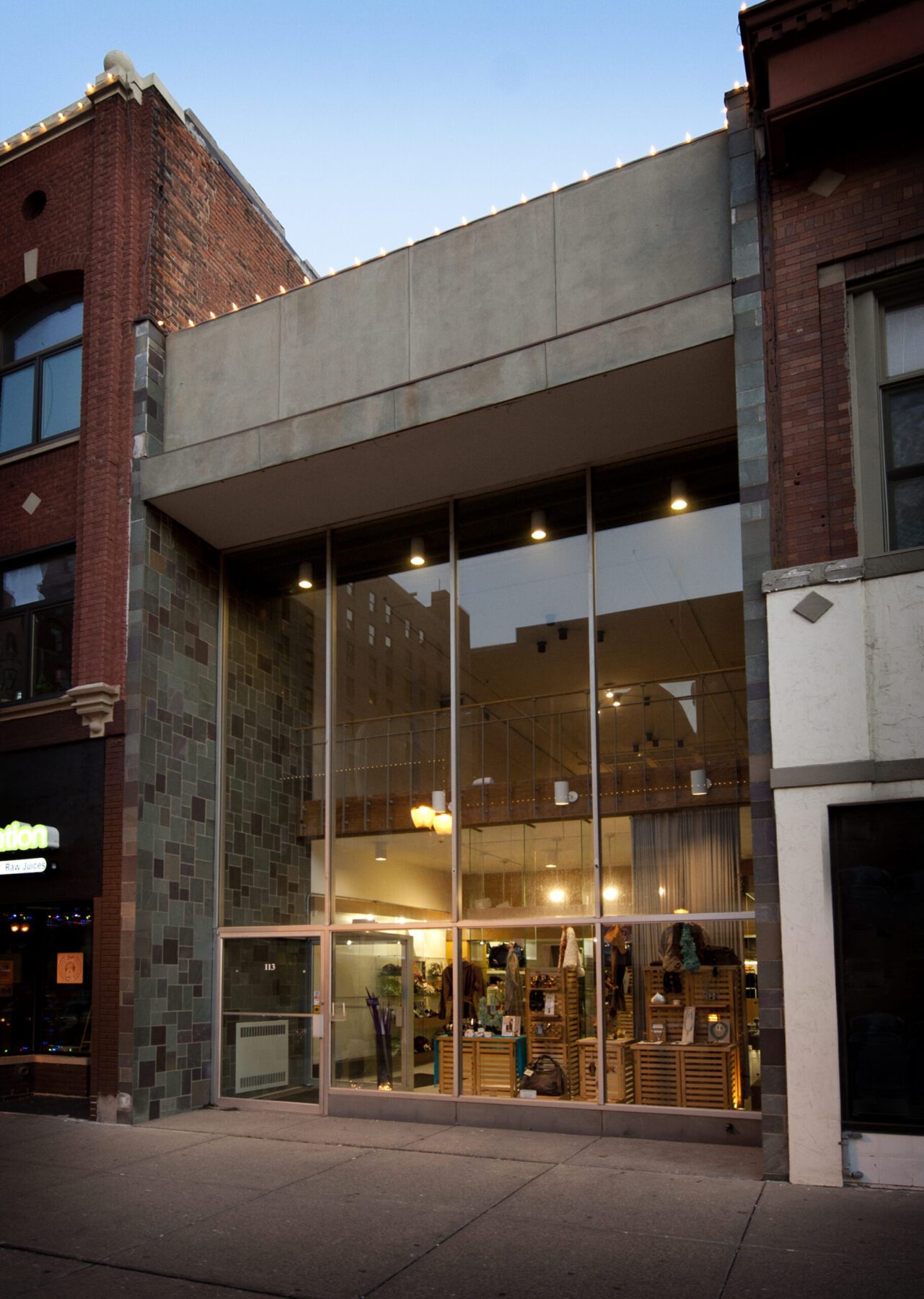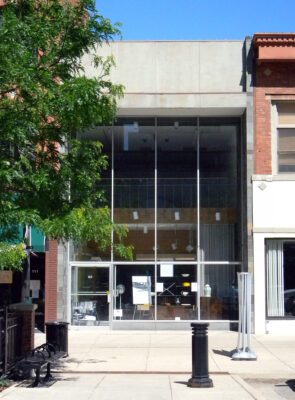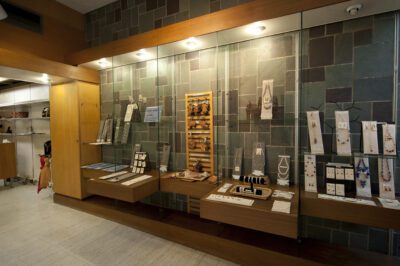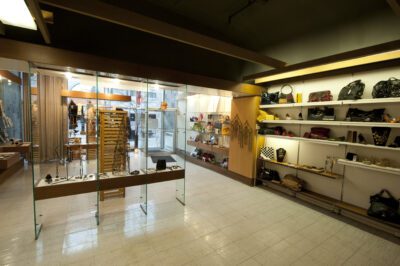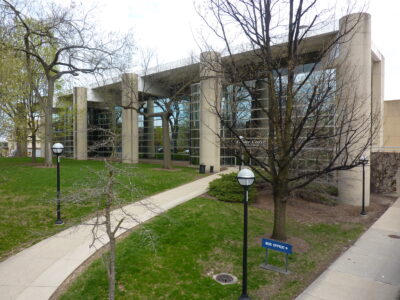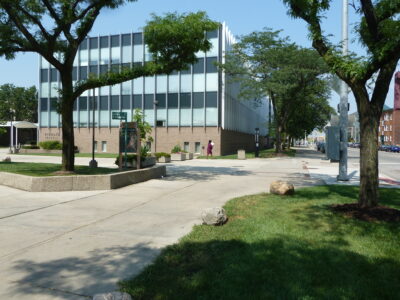The former Liebermann’s store is located on Washington Square in Lansing’s downtown commercial core. The fully glazed modernist storefront stands out among the adjacent traditional red brick facades of the late-nineteenth century buildings that make up the commercial district. The store is a two-story structure supported by wood framing that spans between the masonry party walls of the adjacent buildings. The dramatic facade is recessed approximately four feet from the plane of the adjacent buildings and consists of four, twenty-two-foot tall glass panels set in aluminum frames. The frameless glazed entry door blends into the transparent storefront. The sidewalls are clad with multi-colored slate arranged in an ashlar pattern. The slate-clad walls extend for a short distance into the interior giving way to white plaster walls. Above the glazed storefront is a small projecting cornice and parapet wall clad with what appears to be cementitious panels. On the interior, the plane of the second floor is held back from the glazed wall of the facade creating a two-story volume at the front of the store. The Nelson-designed CSS shelving that was originally used for the display of gifts and housewares remains.
Julius R. Liebermann established Liebermann’s Trunk Company, a leather goods store in 1893. Located in Saginaw, the store specialized in handbags, briefcases, and traveling bags or luggage. Liebermann’s nephew, Hugo Boettcher worked at the Saginaw store until 1931 when he moved to Lansing with his family to open his own Liebermann’s store at 107 Washington Square. Boettcher’s daughter Betty, who had worked in the Liebermann’s stores from the time she was a child, took a keen interest in the retail business. She became a buyer for the store at a very young age and over the years expanded the product lines beyond leather goods to include gifts and housewares. Attracted to both a modern aesthetic as well as Asian-inspired design she purchased items from the lines of Russell Wright and also imported products from Japan and other Asian centers. Sales increased, and in 1938 half of the store’s lower floor was dedicated to gifts and housewares. Inspired by the 1945 book Tomorrow’s House written by George Nelson and Henry Wright, Betty, who had since married (Don Price), sought out Nelson to design a new first floor for the 107 Washington location. At about the same time Nelson accepted the position of design director at the Herman Miller Company in Zeeland, Michigan.
The Liebermann’s first floor remodeling project was completed in 1947 and thus began a long relationship between Nelson and the Prices. Nelson collaborated with Betty over the years until the early 1960s when the Prices asked Nelson to design a new Liebermann’s store for them at 113 Washington Square. Nelson worked with his associate Robert Fymat on the design, which took about three years, and in 1965 the new location was opened. Inset between two late nineteenth or early twentieth century, red brick, commercial structures, the design of the Liebermann’s store was unmistakably modern. Nelson completed his final project for Price in 1972 when he designed a new interior and storefront for Liebermann’s 107 Washington Square location that featured a large illuminated L on the facade (This storefront has been altered beyond recognition). Both of the Liebermann’s stores closed in 1990.
The former Liebermanns’ store at 113 Washington Square is the only retail store designed by noted mid-century architect and designer, George Nelson.

